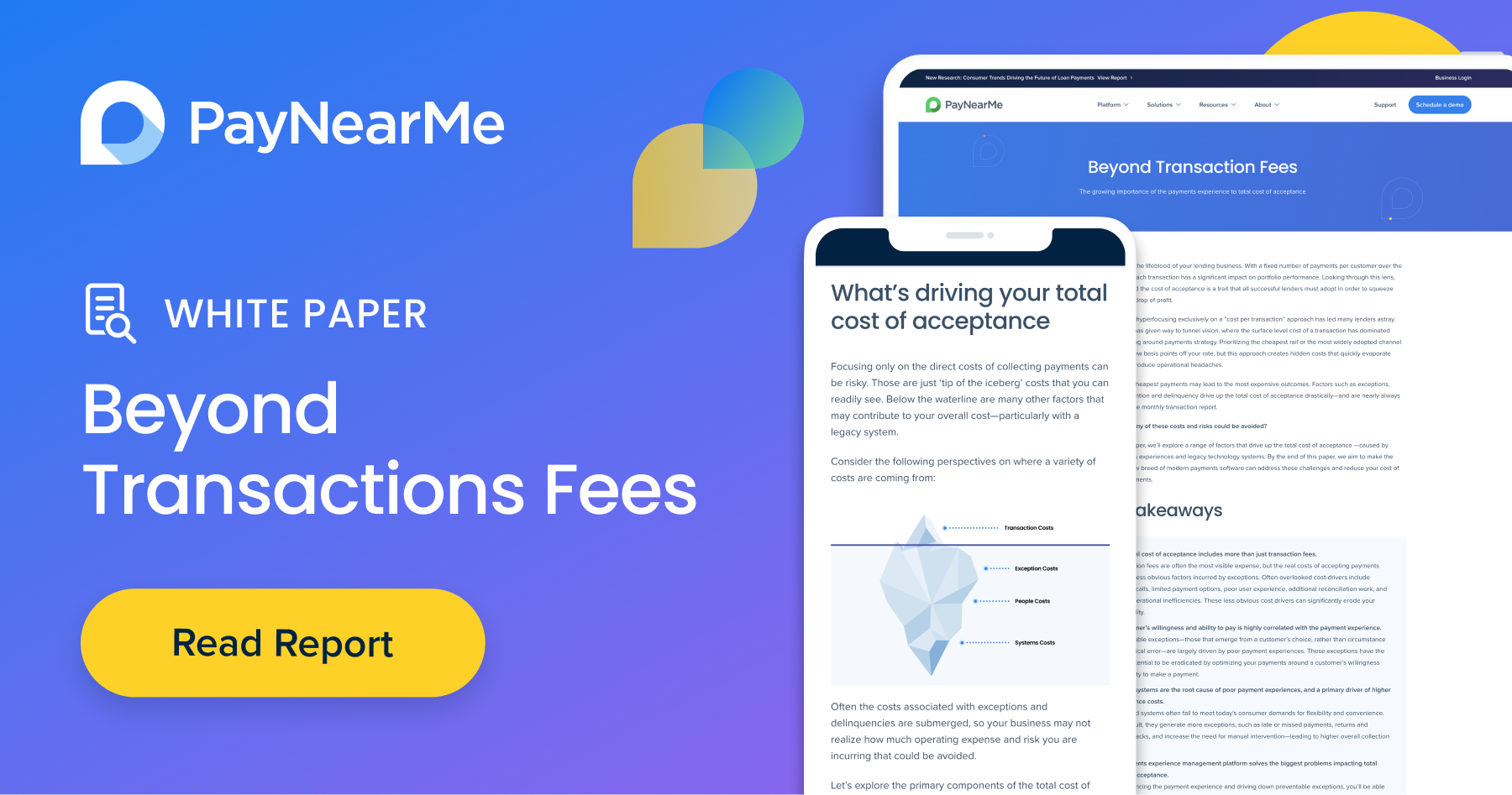Keys to success for accepting rent payments in cash
Property managers will inevitably come across ideal prospective tenants who want to, or need to, pay rent with cash. While the non-bouncing nature of cash seems like a great way to collect the rent, in reality, traditional cash payments can be a risky business, not to mention inconvenient and time consuming. The property manager needs to be on hand to accept the cash payments, then safely store the cash, record it an accounting system, and securely make bank deposits.
Just say no to cash?
With all the hassle, is the solution to stop taking cash? Not if attracting a larger renter pool is a goal. More than 25% of U.S. households are un-banked or under-banked, without ready access to bank accounts, according to a government survey. While online services exist to help process rental payments via electronic bank charge (ACH) or credit card, the under-banked population typically doesn’t have access to either of these payment methods. Plus, accepting cash payments can help property managers access more potential residents in today’s competitive rental market.
Money orders or cashier’s checks might look like a good solution, especially for property management companies without a local office. Then again, tenants have to contend with not one but two errands: first to a bank or other money order service provider, then to deliver the payment to the property management office. These cash alternatives can also be a hassle for property managers to process.
3 rules for successful rent payments in cash
When setting out to accept cash for rent, a few basic guidelines can lead to a good experience for renters and for owners, whether apartment complexes or real estate investors renting out a few properties:
- Ease of payment for more on-time payments: The more easily renters can pay, the less likely a landlord will hear the excuses of why the rent is late. (“You weren’t there.” “I couldn’t get to your office in time.”)
- Proof of payment: Cash should be delivered in person and received in person. The renter always needs a receipt.
- Secure payment and cash deposits: The cash needs to get from the renter and into the property owner’s bank account as quickly as possible, with as few opportunities for theft or fraud as possible.
A new way to accept rent payments in cash
PayNearMe took a close look at the challenges of accepting and handling cash when designing its cash transaction network. One property management company, Alarca Realty in North Carolina, had struggled with wanting to accept cash but was concerned about the shortfalls. They decided to try a new cash payment service called PayNearMe Express. Now Alarca’s tenants can make a quick stop at any local 7-Eleven store day or night to pay their rent with cash, making it easier to pay on time. Tenants get a receipt for their cash rent payment. The property manager gets instant notification of the “digital cash” payment.
Less cash handling means more time for property managers to rent open units and maintain the property — not to mention the relief of not having to count, track, and store cash or make frequent trips to the bank. Gone is the need to reconcile cash payments in the accounting system; PayNearMe summarizes all the payments on one screen.
We’re in a time where more people are renting, yet fewer people have access to bank accounts and credit cards. Therefore, property managers need to make it as easy as possible for tenants who prefer to pay their rent with cash. For property managers, enabling an alternative property manager cash payment options at PayNearMe.com.




